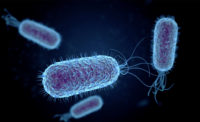Twenty years ago, very few industry observers would have predicted that, at some point in our future, USDA would declare Salmonella to be an adulterant in poultry products. It would “never happen,” most stakeholders argued, because Salmonella is just too difficult to control at all points of the supply chain. Whether early in the process at hatcheries or on farms, or during down-stream processing and handling, Salmonella can and will become introduced into any system and, once introduced, it can then quickly and easily spread. Because, historically, Salmonella has been so prevalent in poultry products, industry, regulators, and consumers alike have all recognized that, because of the inherent risk of Salmonella contamination, these products needed to be handled and prepared appropriately.
With the new exception, of course, of the new adulteration rule governing “not ready-to-eat breaded stuffed chicken products that contain Salmonella at levels at or above 1 Colony Forming Unit per gram.” According to the USDA’s Final Notice published on May 1, 2024, Salmonella has now officially and finally been declared to be an adulterant in these products. What is also certain is that, now that this formal pronouncement has been made, USDA will likely never “walk this rule back,” which is to say that Salmonella will forever be treated and regulated as an adulterant in this category of products.
But, what does the future hold in store for other poultry products? Moving forward, will USDA identify other products to which the new adulteration standards should apply? Will there be a day, in our future, where raw boneless chicken breasts might become subject to the same standards? Never say never.
Indeed, now that the Salmonella adulteration door is officially cracked, and USDA has its foot solidly in the opening, I would predict that other categories of products will likely eventually become additional targets of the new Salmonella adulteration push. This could include other raw (or par fried) breaded chicken products or other products that contain raw chicken components but appear ready-to-eat. Eventually, if adopted for other further processed product categories, it’s entirely possible that new Salmonella adulteration standards could eventually be shifted to non-processed raw products as well.
This new policy and rule could also, potentially, affect raw ground beef products (or, even, trim destined for ground beef) as well. If USDA is concerned about consumers undercooking raw breaded stuffed chicken products that contain Salmonella, it would likely also be concerned with consumers undercooking ground beef that also contains the pathogen. Put differently, the leap USDA would have to make does not really appear to be that far. So, if you produce raw ground beef products, stay tuned – adulteration standards for Salmonella in raw ground beef may also be on the horizon.
What does this mean for the future of Salmonella? I think it means that, at least for certain categories of raw poultry (and, soon, maybe even raw beef), the future of Salmonella has been decisively sealed, as the new standards are now officially in full force – and likely here to stay.










